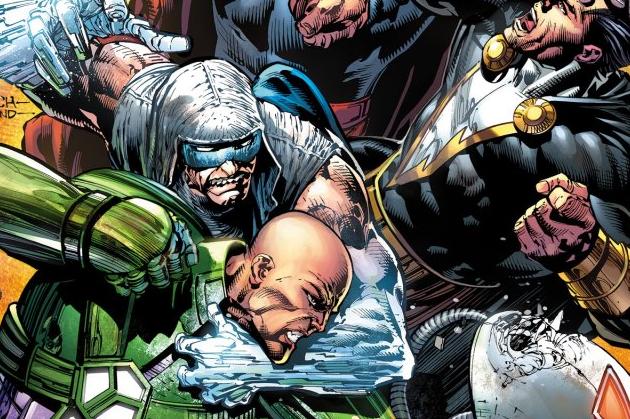Forever Evil #3
Writer Geoff Johns Artist David Finch
Introduction
Forever Evil has been entertaining for the first two issues. Writer Geoff Johns has shown a clear understanding of Lex Luthor, who serves as the main character of this interesting event mini-series. Last issue featured the return of a certain hero that will change the scope of this comic permanently. The first two installments of the tale have been paced very slowly, and we have not quite seen any fallout from the first issue yet. After a certain amount of time, it will be interesting to see if this event will truly create an impact on the publishing line at large. Luthor’s inner monologue has been delivered with grace, but the Crime Syndicate feels really underdeveloped at this point. The main Justice League title has added motivation to one of the members, but the rest still feel a little thin as a whole. With a larger sense of direction and immediacy, this series could begin to feel larger. With Infinity being such a world crushing crossover over at Marvel, Forever Evil can occasionally feel like an enjoyable afterthought.
Writing
This issue feels very fragmented, as opposed to being a full cohesive narrative. Many of these different vignettes are interesting, but they do not add up to a whole. The splash pages here, also feel slightly formulaic and by the numbers. The art at times, is more rushed than usual standards of David Finch, making this comic hard to follow. The sequences involving Lex Luthor remain as the strongest this book has to offer. Many of the other moments feel randomly thrown together in order to spawn crossover fodder. Luckily, most of this installment revolves around the adventures of Luthor. It is also interesting to see the different villains form a solid group of resistance. Johns could use some more focus involved in the tale. It is also slightly frustrating that we are halfway through the event and the fallout from Trinity War is still unanswered.
Art
David Finch is.....well David Finch. The artist has some definitive strengths and weaknesses. For one thing, his pencils can add a seriously dark tone that can really show off some ambience of the book. When he is telling a more grounded story, the stakes can raise with ease. Unfortunately, the gigantic muscular structures can really detract from the look of the different characters. Not every hero or villain in the DC Universe is going to look as if they partake in steroids on a consistent basis. The artist can also add too many lines, giving things a sinister feeling that is not intentional. Luckily, this installment in particular is a darker tale filled with men that should probably have large muscles. Johns did a good job in writing to the strengths of his artist. A splash page with firestorm sums up everything that I have to say about the artist. At the top a wonderful mood with different characters is masterfully evoked, then at the bottom Firestorm looks like a plastic, roided up, rejected 90’s superhero.
Conclusion
Forever Evil is definitely enjoyable, but thanks to the art of David Finch, the product ends up being less than the sum of it’s parts. Hopefully the next installment can add an extra layer of focus, and begin to answer some lingering questions.





